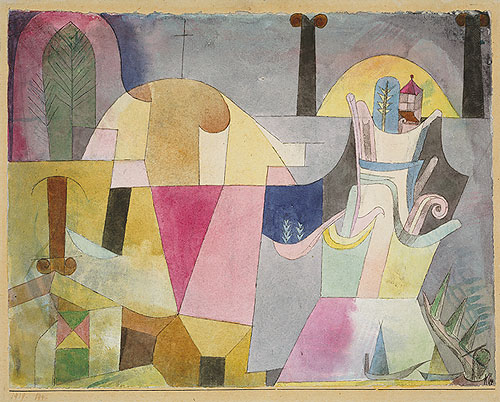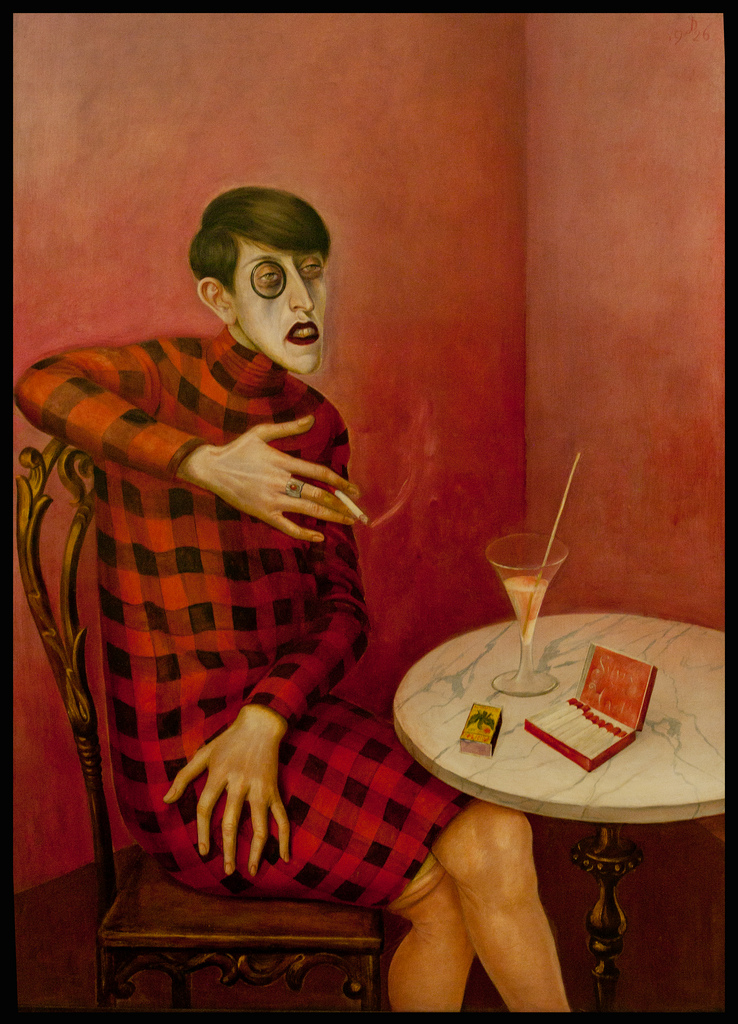It would seem that humour and style are inseparable. But humour itself is not-never was-mere jocularity. Humour is a way of feeling about life, and when humour is great it is almost never without one of its opposite moods- tenderness, tragedy, concern for people’s condition, recognition of human frailty, sympathy with their idealism. Think of how closely the performances of Charlie Chaplin skirted the borders of sadness- which is, of course, the reason why he was always a great comedian, not just an entertainer.

—His subjects reveal his impish humor (1987.455.7) and his bent toward the fantastic (1987.455.16) and the meditative (1984.315.54). Always preoccupied with the ring of words, titles played a major part in his work. Whether ironic, poetic, irreverent, deadpan, flippant, or—near the end of his life—melancholic, his titles set up the perspectives from which he wanted the works to be seen.
—click image for source…
Humor was intrinsic in the style of Paul Klee, the great stylist. Humor, bitter humor, was the informing spirit of James Ensor. It ran like a fire through the most powerful works of Goya, with their sardonic laughter at cruelty and injustice. Humor is present in the penetratingly realistic portraits of Velazquez, too, and in those of Eakins. Humor, that in-seeing kind of humor, accounts for the unrealistic style of Oskar Kokoschka; humor is present in every object and every painting that Picasso ever made. Humor, then, one might say, is an eruption stemming straight out of keen understanding and often, not surprisingly, out of hurt idealism.

—1844-1910. Ecole française. La Muse inspirant le poète. Portraits de Guillaume Apollinaire et de Marie Laurencin. 1909. Huile sur toile. 131X97 cm.—Henri Rousseau. click image for source…
But these reasons are deep substrata and are slow to be recognized; instead the category of “l’art humoristique” is used as a label of exit for those unable to fathom layers of meaning and complexity.
Once, Guillaume Apollinaire sat for a portrait by Henri Rousseau, before Rousseau had been accepted as part of the art scene. The painting was exhibited at the Salon des Independents, and Apollinaire was so certain of what the critics would say about the work that he prewrote their comments and deposited them somewhere in affidavit form. His predictions were accurate. Rousseau was dismissed.

—In the somewhat shocking portrait of the German writer, Sylvia von Harden sits at a café table, drinking a cocktail and smoking a cigarette. She is ugly and androgynous. Somehow, all of the reds in the painting clash and the plaid pattern along with her dark hair and monocle are jarring. Her hands are claw-like and monstrous and the expression on her face is very unattractive. The real lady was not a looker, but she was not nearly as unappealing as Dix portrayed her.
Dix persuaded Von Harden to sit for him by exclaiming, “I must paint you! I simply must! You are representative of an entire epoch!” —click image for source…





 COMMENTS
COMMENTS